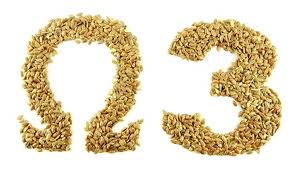 Given the arrival of spring sports, this quick bite focuses on “4”, as in the number of hours to eat before exercise to fuel up the body and enhance performance. This is only a general rule and just as the muscles need to be trained, so does the athlete need to train their GI tract before the main event.
Given the arrival of spring sports, this quick bite focuses on “4”, as in the number of hours to eat before exercise to fuel up the body and enhance performance. This is only a general rule and just as the muscles need to be trained, so does the athlete need to train their GI tract before the main event.
Carbohydrates are an important fuel, providing energy to the muscles and the brain. A carbohydrate-based pre-event meal has been shown to improve performance in athletes. Keep in mind, however, that the majority of people eat carbohydrates in excess and do not need to “carb load” as much as they might think, particularly for the more casual and less active athletes. Remember, carbohydrates are found in breads, rices, pastas, fruits and fruit juices, starchy vegetables, dairy foods, sugar, honey, and other sweeteners. So, keep the T-baller to a regularly balanced meal but consider a meal with 2 cups of pasta, a double serving, and a cup of milk for the competitive soccer player the day before game day.
Early morning games or events pose additional consideration for the athlete. After an overnight fast, the blood sugar and energy levels are low. If it is possible to wake up and eat 4 hours beforehand,
do so. Choose carbohydrate-based foods, such as bagels, fruit, or fruit juice, or a yogurt. Adding a little fat and protein, such as light cream cheese or peanut butter may help maintain energy levels
longer. If there is not time to eat before the event, plan ahead with a slightly bigger low-fat dinner. Add a bedtime snack as well to try and lessen the drop in energy level in the morning.
Some athletes may also benefit from an additional snack just before the exercise or even during the exercise. In events of longer duration (>1 hour) and as long as the intensity is moderate (the pace can be maintained for at least 30 minutes), the body can digest fuel during exercise. In these instances, a light carbohydrate snack, such as medium banana or 8 oz low fat milk, may be beneficial.
If the pace is more intense, such as in sprinting, the body must direct blood flow to working muscles instead of the stomach. Eating during these types of events may cause discomfort or nausea. Therefore, it is best to stick to the 4 hour beforehand fuel-up and allow adequate time for the stomach to empty.
Here’s the bottom line: Fueling up with a carbohydrate-based meal 4 hours prior to exercise has been shown to improve performance. An additional carbohydrate-based snack just before the event and possible during the event may also be beneficial. The level of intensity and duration of the event play a large role in how much, when, and what fuels to consume. For all athletes, the key is to experiment with different foods and different timing during training to find the best eating plan for the main event.




